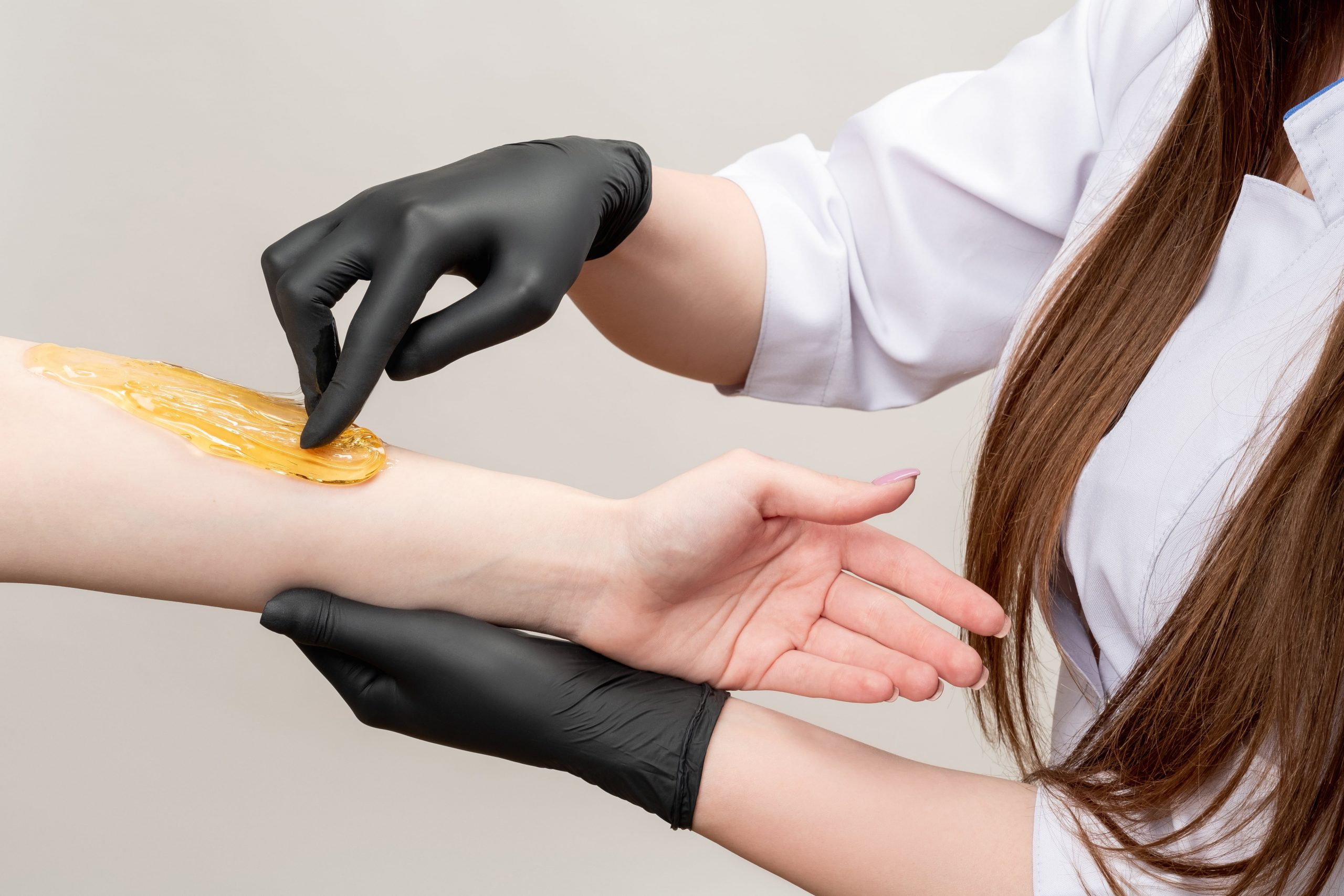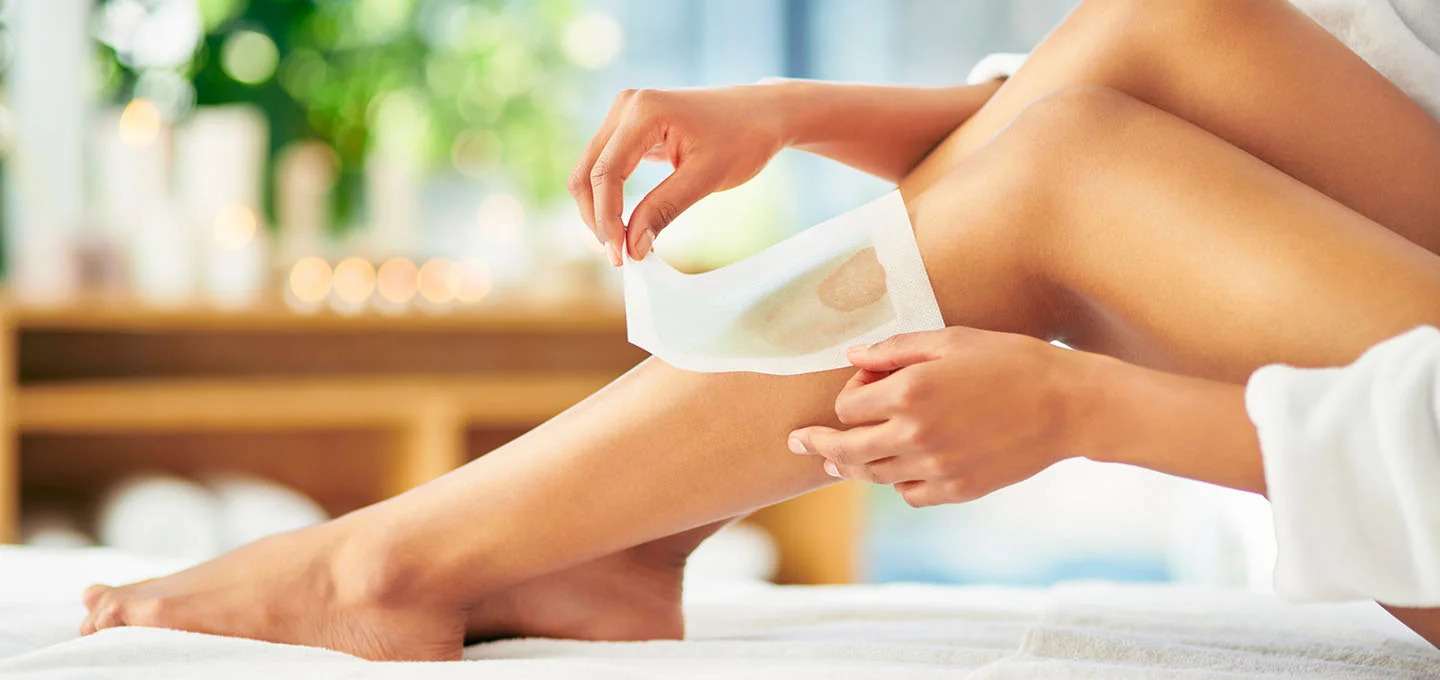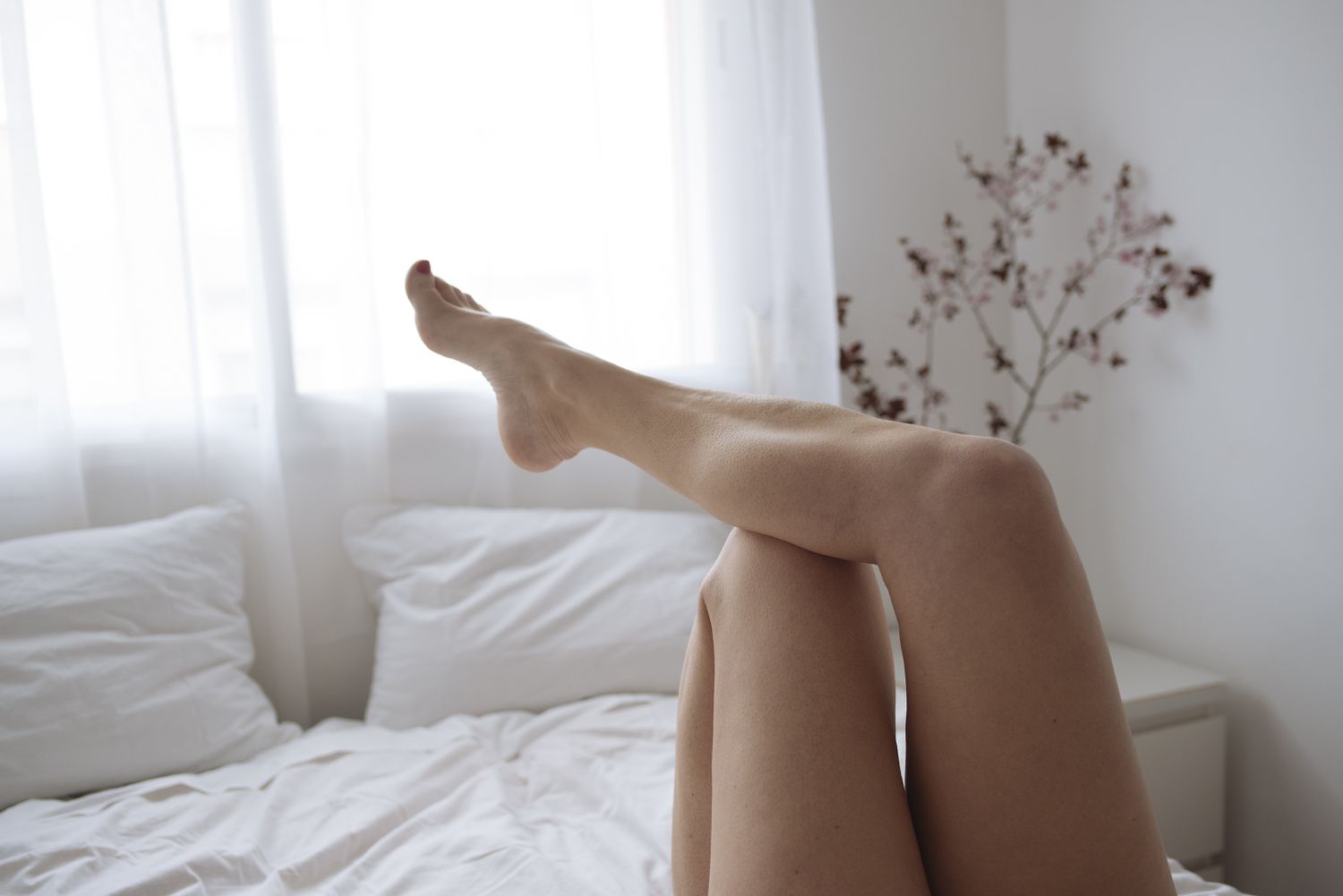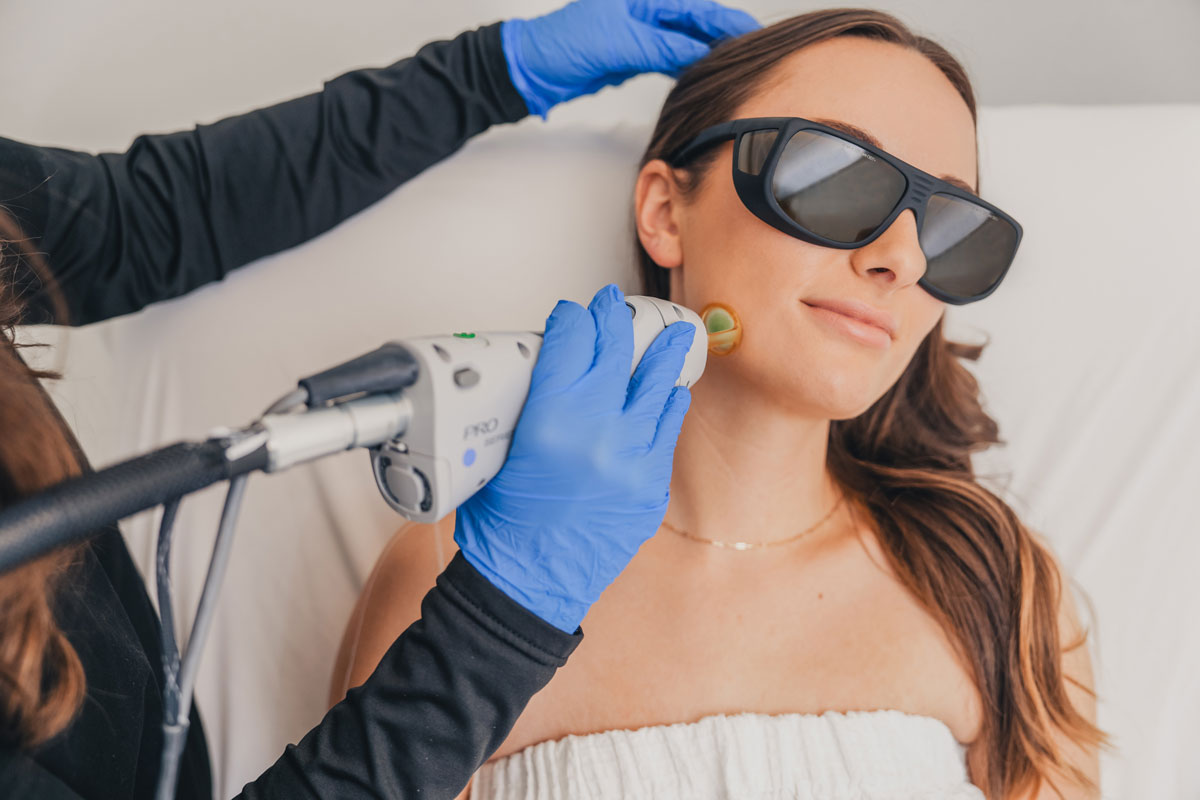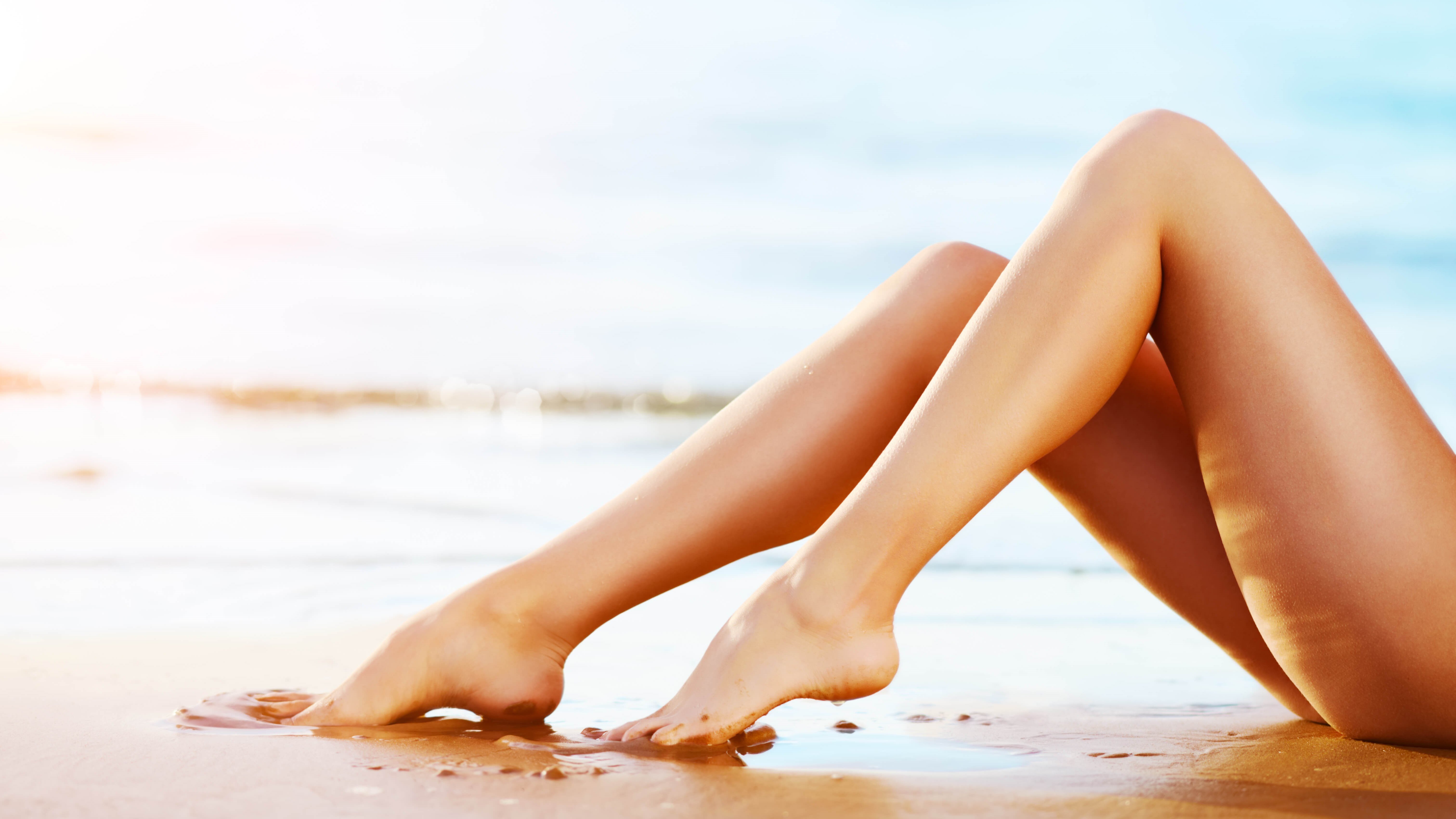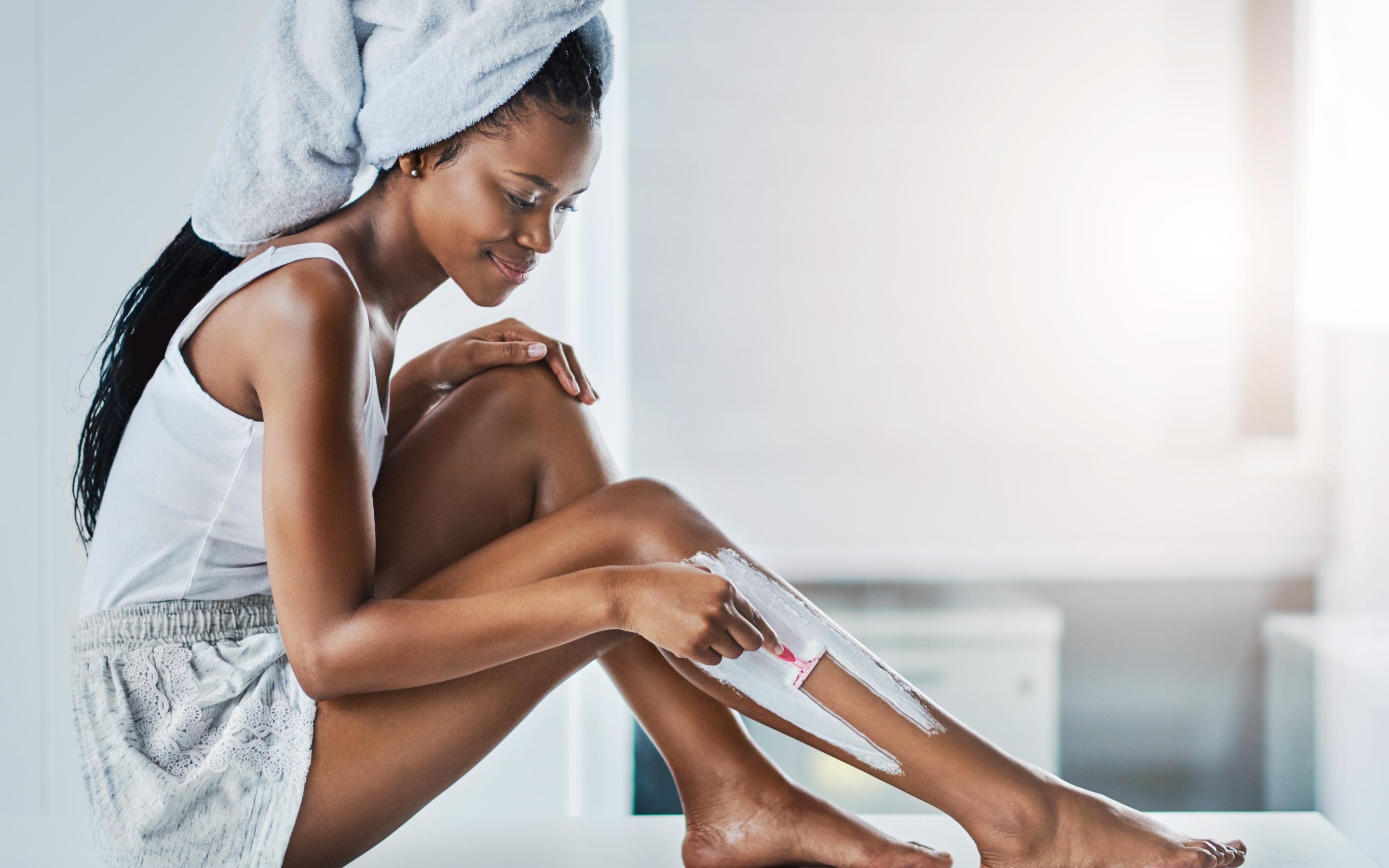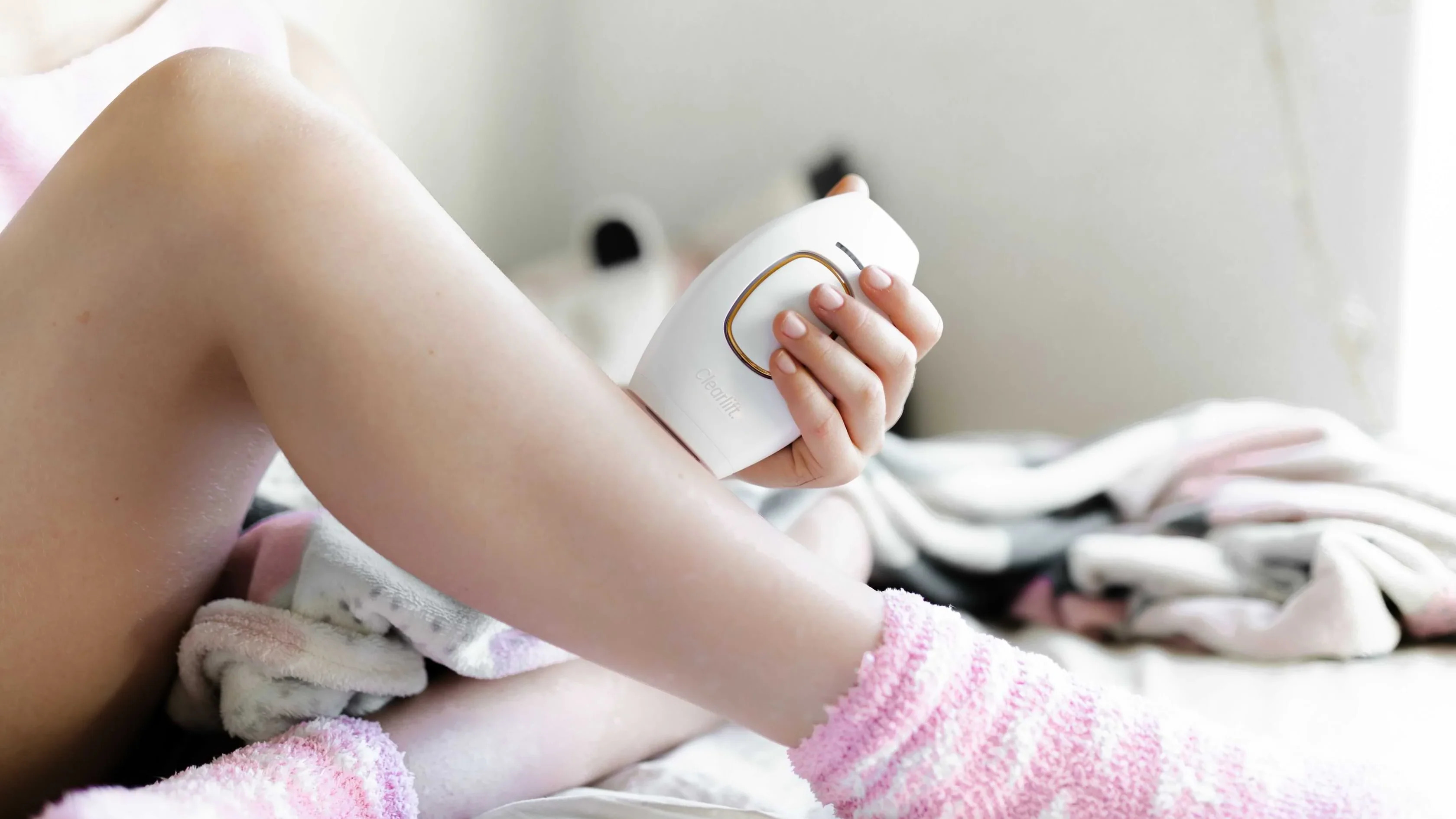Home>How-to Guides>For Women>How To Do Threading Hair Removal


For Women
How To Do Threading Hair Removal
Modified: August 5, 2023
Learn the art of threading hair removal for women with our step-by-step guide. Achieve smooth and precise results at home with our expert tips and techniques.
(Many of the links in this article redirect to a specific reviewed product. Your purchase of these products through affiliate links helps to generate commission for Under-tec.com, at no extra cost. Learn more)
Table of Contents
Introduction
Threading hair removal is a popular technique used by many women to eliminate unwanted facial hair. This ancient method originated in the Middle East and has gained widespread popularity due to its precision and effectiveness. Unlike other hair removal methods, such as waxing or shaving, threading involves using a loop of thread to trap and remove individual hairs from the root. Not only is threading a natural and chemical-free alternative, but it also provides long-lasting results and minimal pain.
In this article, we will delve into the world of threading hair removal and provide you with a comprehensive guide on how to do it effectively. From understanding the benefits of threading to mastering the technique and caring for your skin afterward, we will cover all the essentials you need to know.
Whether you are a beginner or have some experience with hair removal, this article will equip you with the knowledge and skills to make threading a part of your beauty routine. So, let’s dive in and uncover the wonders of threading hair removal!
What is Threading Hair Removal?
Threading hair removal is an ancient technique that originated in the Middle East and has been used for centuries to remove unwanted facial hair. It involves using a loop of twisted thread to catch and pull out individual hairs from the root. The thread is skillfully and precisely manipulated by a trained technician to remove the hair, resulting in a clean and smooth finish.
Threading is especially popular for shaping and defining eyebrows, but it can also be used to remove hair from other areas of the face, such as the upper lip, chin, and sideburns. It is known for its accuracy and precision, allowing for the removal of even the shortest and finest hair strands. This makes it an ideal method for achieving well-defined and symmetrical eyebrows.
One of the main advantages of threading hair removal is its gentle nature. Unlike waxing, there is no pulling or tugging on the skin, which can cause redness, irritation, or even burns. Threading only targets the hair follicles, leaving the surrounding skin untouched. This makes it a suitable option for individuals with sensitive skin or those prone to allergic reactions.
Another notable benefit of threading is that it does not require the use of any chemicals or products. The only tool used is a simple cotton thread, making it a natural and eco-friendly hair removal method. There is no risk of skin allergies or chemical reactions, as is sometimes the case with depilatory creams or waxing products. This simplicity and lack of harsh ingredients contribute to the popularity of threading.
Overall, threading hair removal is a time-tested and effective method for removing unwanted facial hair. Its precision, gentleness, and natural approach make it an appealing choice for many women. In the next sections of this article, we will explore the step-by-step process of threading and provide you with tips and techniques to achieve the best results. So, let’s continue our journey into the world of threading hair removal!
Benefits of Threading Hair Removal
Threading hair removal offers numerous benefits that make it a popular choice for women seeking effective and precise hair removal. Let’s explore some of the key advantages:
- Precision: Threading allows for precise hair removal, especially when it comes to shaping the eyebrows. The technician can precisely control which hairs are removed, resulting in well-defined and symmetrical eyebrows.
- Gentle on the Skin: Unlike waxing or other hair removal methods, threading is a gentle process that does not involve pulling or tugging on the skin. This makes it suitable for individuals with sensitive skin or those prone to redness and irritation.
- Natural and Chemical-Free: Threading requires only a simple cotton thread, making it a natural and eco-friendly method. It does not involve the use of any chemicals or products, reducing the risk of skin allergies or irritation.
- Long-Lasting Results: Threading removes hair from the root, which means the regrowth takes longer compared to shaving or depilation. This results in longer-lasting smoothness, and the hair that does grow back is typically finer and softer.
- Minimal Pain: While everyone’s pain threshold may vary, most people find threading to be a relatively painless hair removal method. Some liken the sensation to a slight pinch or pulling sensation, which is far less uncomfortable than waxing.
- Suitable for All Hair Types: Threading can effectively remove all types of hair, from fine baby hairs to coarse and stubborn facial hair. This versatility makes it suitable for individuals with different hair textures and densities.
- No Skin Damage: Since threading only targets the hair follicles, it does not cause any damage to the skin. There is no risk of burns, redness, or scarring that can occur with waxing or other harsh hair removal methods.
- Quick and Efficient: Threading is a relatively fast hair removal method, especially for smaller areas like eyebrows or upper lip. The trained technician can swiftly remove multiple hairs in one go, making it a convenient option for those with a busy schedule.
- Cost-Effective: Compared to other hair removal methods like laser or electrolysis, threading is a more affordable option. It requires minimal supplies and no expensive equipment, making it accessible to a wide range of individuals.
These benefits make threading hair removal a popular choice among women who value precision, gentleness, and long-lasting results. As we continue, we will provide you with a step-by-step guide on how to perform threading effectively.
Step-by-Step Guide to Threading Hair Removal
Threading hair removal may seem intimidating at first, but with practice and patience, you can master the technique. Follow these step-by-step instructions to effectively remove unwanted facial hair using threading:
- Prepare the Thread: Start by cutting a piece of cotton thread approximately 24 inches long. Knot the ends together to create a loop.
- Position the Loop: Hold the loop with both hands, placing your thumbs and index fingers inside the loop. Twist the thread in the center a few times to create a twisted section in the middle.
- Target the Hair: Position the twisted portion of the thread over the area with unwanted hair. Make sure the hair is within the loop and close to the root.
- Twist and Pull: While holding the thread with both hands, use a twisting motion to glide the loop across the targeted hair area. The twisted section of the thread will catch the hairs and pull them out from the root.
- Practice and Precision: As you gain more experience, you can refine your technique and focus on specific areas like shaping the eyebrows or removing hair from the upper lip. Take your time to be precise and avoid pulling on the skin.
- Continue the Process: Repeat steps 3 to 5 to remove all the desired hair in the targeted area. Adjust your hand and finger positions as needed for different areas of the face.
- Aftercare: Once you have finished threading, gently cleanse the area with a mild cleanser to remove any remaining hair or debris. Apply a soothing moisturizer to calm the skin and reduce any potential redness or irritation.
Remember, threading requires practice and patience to perfect the technique. If you are new to threading, it may be helpful to seek guidance from a trained professional or esthetician who can demonstrate the proper threading technique and offer personalized tips.
Now that you have learned the step-by-step process for threading hair removal, let’s move on to the next section, where we will discuss how to prepare for a threading session.
Preparing for Threading Hair Removal
Before you embark on a threading hair removal session, it is essential to prepare your skin and hair to ensure a successful and comfortable experience. Here are some tips to help you prepare:
- Allow Hair Growth: To ensure that the hairs are long enough to be threaded, let them grow out for at least two to three weeks before your threading appointment. This will allow the technician to grab and remove the hair easily.
- Cleanse Your Skin: Before threading, cleanse your face thoroughly with a gentle cleanser to remove any dirt, oil, or makeup. Clean skin ensures that the thread can grip the hairs firmly.
- Exfoliate the Skin: Exfoliating the skin a day or two before threading can help remove dead skin cells and free any trapped hairs. This can enhance the effectiveness of the threading process.
- Avoid Sun Exposure: It is best to avoid excessive sun exposure or tanning treatments before threading. Sunburned or irritated skin can be more sensitive and prone to discomfort during the threading process.
- Communicate with the Technician: If it is your first time threading or if you have any specific concerns, communicate them to the technician. They can provide guidance, answer your questions, and ensure a comfortable experience.
- Manage Pain Sensitivity: If you have a low pain tolerance, consider applying a numbing cream 30 minutes before your threading appointment. This can help minimize any discomfort you may experience.
- Avoid Skin Products: Avoid applying any creams, lotions, or oils to the targeted area before threading. These products can make the skin slippery, making it more challenging for the thread to grip the hairs effectively.
- Maintain Overall Skin Health: It is important to maintain good skin health by following a skincare routine that includes moisturizing, wearing sunscreen, and keeping your skin hydrated. Healthy skin can better tolerate the threading process.
Preparing your skin before threading is crucial for achieving optimal results and minimizing any potential discomfort. By following these preparation tips, you can have a smooth and effective threading hair removal session.
Now that you are prepared and ready for threading, let’s move on to the next section, where we will explore different threading techniques and provide you with useful tips for a successful threading experience.
Threading Techniques and Tips
Threading hair removal requires some technique and skill to achieve the best results. Here are some threading techniques and tips to help you master the art of threading:
- Maintain Taut Skin: For effective hair removal, it’s important to hold the skin taut with your free hand while threading. This helps the thread grip the hair better and prevents unnecessary tugging on the skin.
- Practice Control and Precision: Threading requires precise hand movements and control. Practice your threading technique on a small area first, focusing on maintaining a steady and smooth motion.
- Thread in the Opposite Direction: When threading, move the twisted portion of the thread in the opposite direction of hair growth. This ensures that the hair is caught and removed from the root.
- Go Slowly and Gradually: Make sure to thread slowly and gradually, especially if you are new to threading. Rushing the process can lead to mistakes or uneven hair removal.
- Focus on Small Sections: Instead of trying to remove all the hair in a large area in one go, focus on small sections. This helps maintain control and precision, ensuring you target each hair effectively.
- Check for Proper Hair Grip: After threading, check if the hair has been properly removed from the root by inspecting the thread. Adjust your technique or rethread any hairs that haven’t been fully removed.
- Use Eyebrow Brush or Spoolie: After threading eyebrows, gently brush them with an eyebrow brush or spoolie to remove any loose hairs and give them a polished look.
- Seek Professional Help: If you find threading challenging or you’re not getting the desired results, consider seeking help from a trained professional. They can shape your eyebrows or perform threading for other areas with expertise.
- Practice Regularly: Like any skill, threading requires practice to improve. Set aside time to practice threading on yourself or volunteer as a practice model for friends or family to refine your technique.
- Prioritize Hygiene: Ensure that the thread used for threading is clean and sanitized. Dispose of used thread properly and avoid sharing threading tools to maintain hygiene.
Threading can be a rewarding and effective hair removal technique when mastered. With practice and the right techniques, you can achieve well-defined eyebrows and smooth facial skin.
Now that we have covered threading techniques and tips, let’s move on to the next section, where we will discuss aftercare for threading hair removal.
Aftercare for Threading Hair Removal
After undergoing threading hair removal, it is important to give your skin proper care and attention to ensure optimal healing and reduce any potential discomfort. Here are some essential aftercare tips:
- Cleanse the Area: After threading, gently cleanse the treated area with a mild, non-abrasive cleanser to remove any residue, oils, or debris. Pat the area dry with a clean towel.
- Avoid Touching or Aggravating the Skin: It is important to avoid touching or scratching the threaded area to prevent irritation or infection. Refrain from applying any makeup or skincare products immediately after threading.
- Apply a Soothing Moisturizer: After cleansing, apply a soothing moisturizer to the threaded area to calm the skin and reduce any redness or irritation. Look for a lightweight, non-comedogenic formula suitable for facial use.
- Avoid Direct Sun Exposure: Protect the threaded area from direct sun exposure for at least 24 to 48 hours after threading. If going outdoors, apply a broad-spectrum sunscreen with SPF 30 or higher to shield the skin from harmful UV rays.
- Avoid Exfoliation and Harsh Products: Refrain from using any exfoliating products, scrubs, or harsh treatments on the threaded area for a few days. These can further irritate the skin and disrupt the healing process.
- Avoid Sweating and Steam: Avoid activities that may cause excessive sweating or expose the threaded area to steam, such as saunas, steam rooms, or vigorous workouts. Sweating can irritate the skin and potentially lead to breakouts.
- Avoid Picking or Tweezing: Resist the temptation to pluck any stray hairs that may appear after threading. Allow the hair to grow out before the next threading session to maintain optimal hair growth and shaping.
- Attend Follow-Up Sessions: To maintain the shape and cleanliness of your eyebrows, consider scheduling regular follow-up threading sessions every two to four weeks, depending on your hair growth rate.
- Stay Hydrated: Drinking plenty of water and maintaining overall skin health through hydration can support the healing process and promote healthy hair growth.
- Communicate Any Concerns: If you experience any excessive redness, swelling, pain, or signs of infection after threading, contact a healthcare professional to seek appropriate advice and treatment.
By following these aftercare tips, you can optimize the results of your threading hair removal session and maintain healthy, well-groomed skin. Remember to be gentle with your skin and give it time to heal and rejuvenate naturally.
Now that you are familiar with aftercare for threading, let’s address some frequently asked questions about threading hair removal.
Frequently Asked Questions (FAQs)
Here are answers to some common questions about threading hair removal:
- Is threading painful?
While everyone’s pain tolerance may vary, most people find threading to be a relatively low-pain hair removal method. Some describe it as a slight pinch or pulling sensation, which is generally more tolerable compared to waxing. - How long does threading hair removal last?
Threading removes hair from the root, which means the results can last anywhere from two to four weeks. However, hair growth patterns and individual factors can affect the duration of the hair-free period. - Can threading cause skin irritation?
Threading is generally a gentle method of hair removal. However, some individuals with sensitive skin may experience temporary redness or slight irritation after threading. This usually subsides within a few hours. - Can threading be done on any part of the body?
While threading is most commonly used for facial hair removal, it can also be applied to other parts of the body. However, due to its precise nature, it may not be as suitable for larger areas or areas with thicker hair growth. - Is it safe to thread eyebrows at home?
Threading eyebrows at home is possible but requires practice and caution. It is recommended to seek professional assistance for the best and safest results, especially when shaping your eyebrows. - Can threading cause ingrown hairs?
Threading, when done correctly, typically does not cause ingrown hairs. In fact, threading can help prevent ingrown hairs by removing them from the root and reducing the likelihood of hair growing back beneath the surface of the skin. - Is threading suitable for everyone?
Threading is generally safe for most individuals. However, it may not be suitable for individuals with certain skin conditions, such as eczema, psoriasis, or open wounds. If you have any skin concerns, consult with a dermatologist before opting for threading. - Can I thread if I am pregnant?
Threading is considered a safe hair removal method during pregnancy, as it does not involve the use of any chemicals or products that can harm the developing fetus. However, always consult with your healthcare provider before trying any new beauty treatments during pregnancy. - How long does it take to learn threading?
Learning threading can take some time, and proficiency develops with practice. With regular practice and guidance, it is possible to become proficient in threading within a few weeks or months. - Can men get threading hair removal?
Yes, threading is not limited to women and can be performed on men as well. Men can opt for threading for hair removal in areas such as the eyebrows, upper lip, or cheeks.
These are general answers to frequently asked questions about threading hair removal. If you have specific concerns or questions, it is always best to consult a professional threading technician or a skincare specialist.
Now that we have addressed some common questions, let’s wrap up our discussion on threading hair removal.
Conclusion
Threading hair removal is an ancient technique that offers precision, gentleness, and long-lasting results. It has become a popular choice for women seeking to shape their eyebrows or remove unwanted facial hair. With its natural and chemical-free approach, threading provides a safe and effective alternative to other hair removal methods.
In this article, we explored the world of threading, from understanding what it is and its benefits to providing a step-by-step guide for effective hair removal. We also discussed essential tips for preparing the skin, different threading techniques, aftercare, and answered common questions related to threading.
Threading allows for precise shaping of eyebrows and removal of unwanted facial hair without causing damage to the skin. It is a suitable option for individuals with sensitive skin, as it minimizes the risk of redness, irritation, and allergic reactions.
Remember, mastering the art of threading may require practice and patience. If you are new to threading or prefer professional assistance, consider seeking the help of a trained technician who can provide expert guidance and shape your eyebrows according to your desired aesthetic.
Whether you choose to perform threading at home or opt for professional assistance, following proper aftercare is crucial. Cleansing, moisturizing, and protecting the threaded area from sun exposure are essential steps to promote healing and maintain optimal skin health.
Now that you have learned about threading hair removal, its benefits, and the necessary techniques, you can confidently incorporate this natural and effective method into your beauty routine. Embrace the precision, gentleness, and long-lasting results that threading offers, and enjoy beautifully shaped eyebrows and smooth, hair-free skin.

